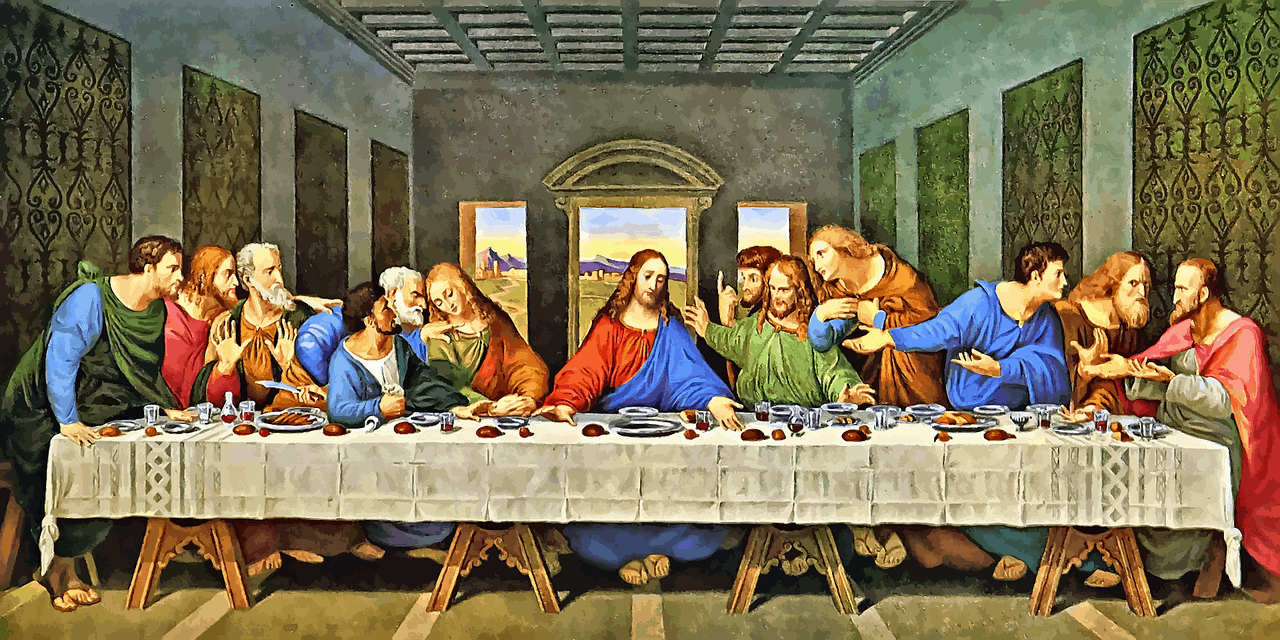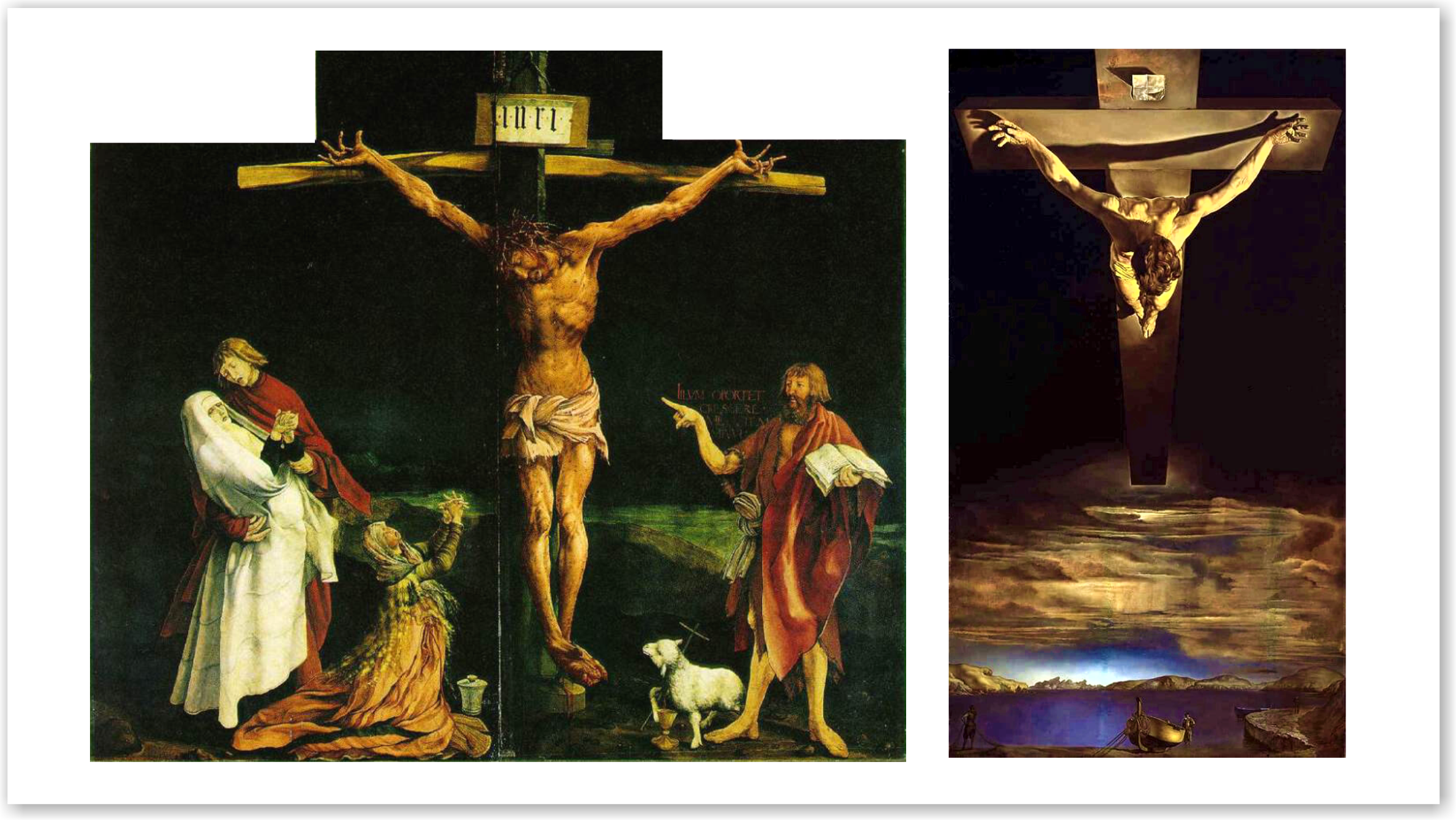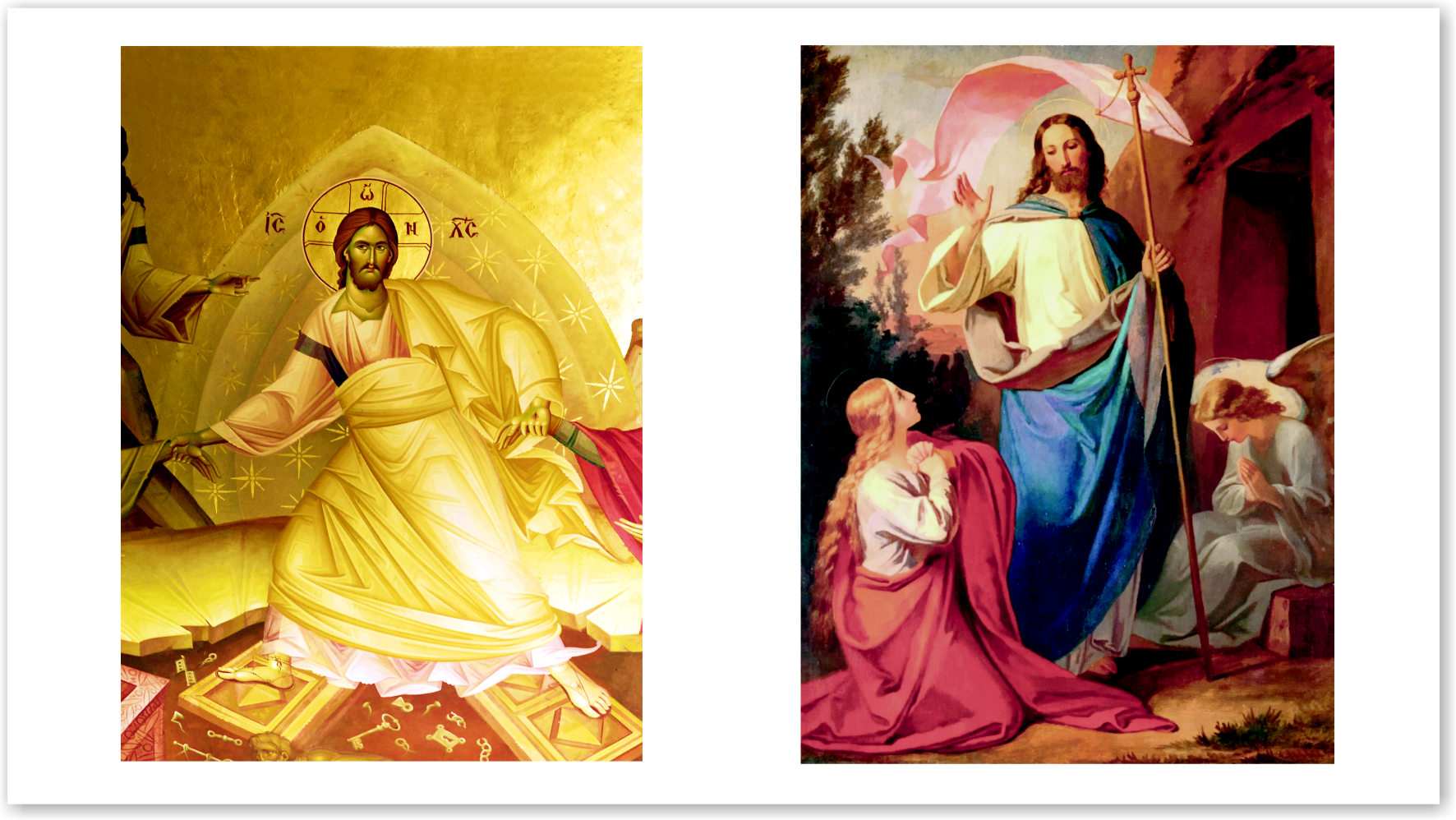
Celebrating Easter 2021
24th March 2021

From the time that the early Christians spent in the catacombs under Rome, trying to escape from bitter persecution, art and Christian worship have been intertwined. Although many biblical themes and characters have been tackled throughout the centuries, the vast outpouring of creativity has focussed on a short period of time leading up to the crucifixion. From the pain of Good Friday to the joy of Easter Sunday, Christian art has depicted the Easter message in all its colourful, creative glory.
The numerous wall paintings that survive from the earliest periods, show Christ represented as a fish or a young shepherd, the Church symbolised by a ship, immortality represented by a peacock and hope depicted as an anchor. This is the earliest Christian Art.
From Saxon Times onwards, stone carvings showing scenes from the bible or from the lives of various saints were used to decorate churches. Many of these have survived, although work from the same period in wood, as well as embroidery, vestments and altar frontals, has long disappeared.

Art & Faith
Because the Christian Church was the only major patron of the arts for centuries, religious themes dominated art throughout the medieval and Renaissance periods, with strong focus on the themes of Easter. In the beginning, artists were reluctant to portray the agony of Christ at his crucifixion but once this reluctance had passed, the passion of Christ became an artistic preoccupation. A strong appeal was made to the onlooker's emotions as Jesus' judgement under Pilate, whipping by the soldiers, nakedness, humiliation and suffering were vividly portrayed. There was a clear link between Matthias Grünewald's The Crucifixion, painted in the early 16th century and Salvador Dali's Christ of St John of the Cross from 1951, a stark painting of Christ dying for the world.
In the middle ages, glass was regarded as almost magical and divine. Glass makers could turn the lowest elements of earth into a durable and magnificent substance. It was its ability to transmit light that made glass so special. In religious terms, light symbolised the quality of the Holy Spirit, so glass was ideally suited to the interpretation of spiritual themes. Stained glass windows were also an extremely valuable visual teaching aid at a time when the vast majority of the population was illiterate.
The Easter Story in Art
The images of Jesus' triumphant entry into Jerusalem as celebrated on the Sunday before Easter, palm Sunday, has been interpreted in paint throughout Christian history, glorious, green palm branches waving in celebration of the Lord. On the Thursday before Easter, Maundy Thursday remembers the last supper when Jesus initiated the Eucharist by breaking bread and drinking wine, one of the most celebrated images of Christianity made especially significant in art by Leonardo Da Vinci.
At Easter Good Friday, the image of the crucified Christ is a vivid Christian reminder of his sacrifice, as we mourn his humiliation and subsequent death. This image has become one of the most depicted in the history of the world, represented in Christian art from stained glass windows and frescoes to sculpture and painting. Easter Sunday joyously celebrates the resurrection and it is interesting to note that this is one of the least artistically depicted episodes of the Easter story. A mystery considering the resurrection is the basis of the Christian faith.
Mgr Timothy Verdon, a canon of Florence Cathedral, is a historian of Christian art, explains:'
"A first obvious answer is that, while all can easily relate to images of a baby in his mother’s arms, or to depictions of human suffering (for we have all been babies and have all known some measure of suffering), resurrection from the dead is difficult to imagine. It is indeed the hardest thing Christians are asked to believe, running counter to all known experience.
And the second answer, closely related to the first, is that the Scriptures, which provide most of the information on which Christian art draws, do not in any way describe the Resurrection, but simply announce it. The angel who rolled away the stone sealing the tomb tells the women come to anoint Christ: “I know you are looking for Jesus, who was crucified. He is not here, for he has risen, as he said he would. Come and see the place where he lay” (Matthew 28:5-6)."

There are, of course, many other iconographical subjects involving the Risen Christ: the Noli me tangere, with Mary Magdalene who seeks to embrace the resurrected Lord; the Supper at Emmaus; the Incredulity of St Thomas, with the Apostle who puts his hand in Christ’s side, and so on. But the very moment and the specific manner of Christ’s rising remain among the mysteries Christians accept on faith: things no eye has seen nor ear heard, things “the human mind cannot visualise: all that God has prepared for those that love him” (1Corinthians 2:9). That is what Easter is: all that God has prepared for those that love him.
As we plan how we will be celebrating Easter 2021 through difficult times, its message fills us with hope, as we move forward in faith of healthier, brighter times for us all.
If you are interested in the Easter story depicted in art then you might like the video below from The National Gallery of Art, Washington D.C.